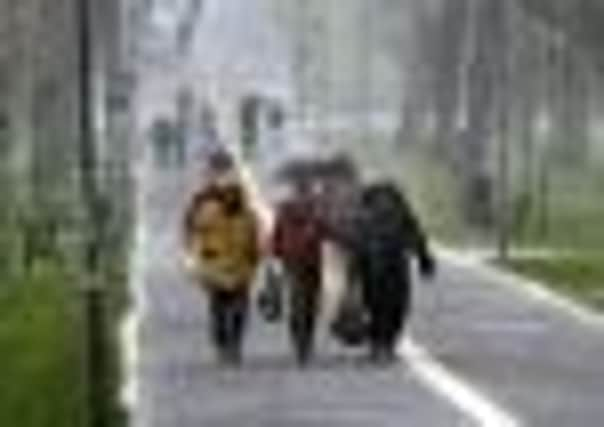Dr Keith Baker: Whether we believe it or not, climate change is real


There’s a lot of wisdom in old sayings. One of them is that Scotland doesn’t have seasons, it just has weather, and now we know just how true that saying is. That wisdom tells us that the recent unseasonal spells of sunshine and snow are nothing particularly unusual in their own right, and that’s exactly what science says too.
It’s only when we look at the bigger picture that we see the climate really is changing, and it all makes sense if you understand the differences between what we call weather and climate, and how we perceive them.
Advertisement
Hide AdAdvertisement
Hide AdWhen scientists use the word weather they mean a particular weather event. It might be short and small like a shower, or it might last much longer and cover a large area, like the snow of 2010.


We all know exactly what we’re referring to when we talk about “weather”, and it can be very accurately measured, but weather forecasters still have a difficult job getting predictions right. They didn’t predict that snow because they got the height of the clouds wrong by just a couple of hundred metres, and that made the difference between the water staying in the air and falling out of it. This time they saw it coming.
We often use the term “weather” to describe the average weather for an area but what we really mean is its climate. Scientists typically study average weather conditions over large areas and very long periods of time, and all these data and models add up to a big and complex picture of the global climate and how it has changed, and is changing, due to human actions.
These results don’t always seem to tally with our personal experiences, but there are good reasons for this. When we get a heatwave in winter or snow falls in spring we notice it and we remember it, but we don’t pay the same attention to more gradual changes in the weather over time, so what scientists see in the numbers can seem very different to what we experience and remember.
Scientists see this growing mass of data as overwhelming evidence, but their charts and diagrams can take time to understand. Even where they can point to things that have already happened, like a glacier retreating or a species going extinct, they don’t usually happen overnight and in the public eye, unlike the weather. And that’s the problem.
For most people, accepting that climate change is happening is a mix of understanding and belief, but humans and their beliefs are complex things, and we are prone to what psychologists call “confirmatory bias”. This kicks in when accepting something new means making changes, particularly for people who feel their beliefs are challenged by the evidence, and, as a belief, climate change is a pretty hard sell. Climate deniers know all this and have become very skilled in exploiting it, but fortunately it can also work the other way.
Whilst it’s important to be sceptical of claims we don’t understand, in reality we accept a lot of good science without understanding all of it. Take atoms. First we are taught they are tiny solid balls that make up everything, and we accept that because our science teachers tell us. Then later we learn about electrons whizzing round a nucleus, and we accept that too. And unless you’re one of the very few who really understands where all this comes from, that’s another big mental leap to take based on what scientists say the evidence means.
To make things harder, it’s one thing to understand climate change and the need to make changes, and quite another to do something about it. Studies have also shown that we’re more likely to make changes that bring immediate rewards, which explains why we tend to stick with our energy suppliers when others are offering better deals. If those savings arrived straight away we’d all be switching more.
Advertisement
Hide AdAdvertisement
Hide AdScientists are rightly reluctant to say any unusual weather event is absolutely due to climate change, but they do expect them to become much more common.
So if you accept the science then the sunshine and snow has been a helpful reminder – and if you don’t then at least check your energy bills.
• Dr Keith Baker is a research associate with Sustainable Urban Environments Research Group at Glasgow Caledonian University, and co-organiser of Edinburgh 350.org. He is also co-author of the forthcoming book Carbon Management in the Built Environment.
City limits
THE recent weather has been a shock to the system, but over the past five years the Capital has seen an increasing number of such extremes.
This January the city was battered by a four-hour storm with gusts of more than 100mph causing chaos.
That followed severe storms in December 2011, which saw winds reach 77mph in the city.
But just months earlier the Capital recorded the hottest September day in years, with temperatures hitting 25C.
In the 2010/11 festive period, the army helped the Capital cope with the big freeze. In 2009, the city was frozen and stilled under a blanket of ice.
February 2009 was one of the coldest on record, with a low of -7C. And in August 2008 more than 24 hours of rain brought chaos.